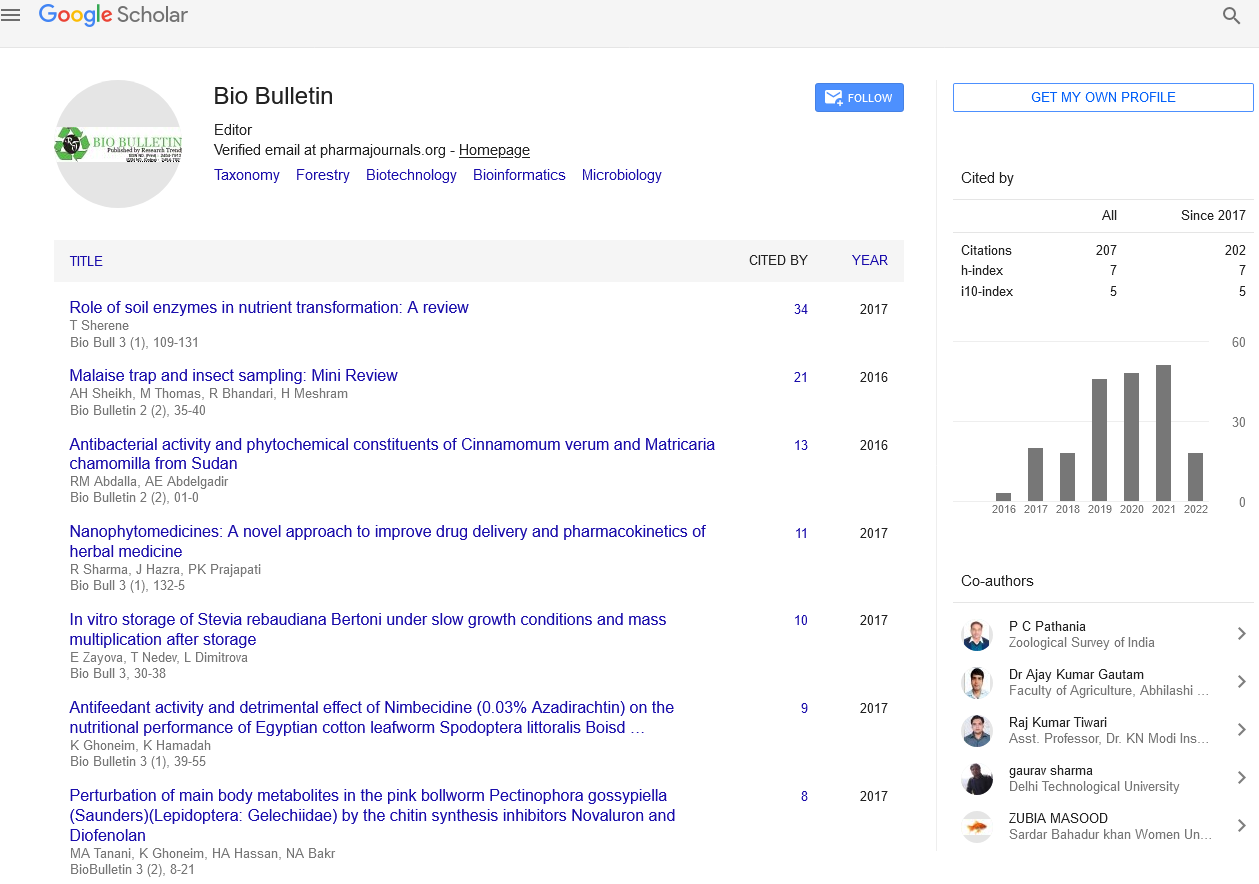MICAL1 Activation Mediates Actin Filament
Commentary - (2021) Volume 7, Issue 3
Description
Activation of MICAL1 mediates actin filament MICAL1 monooxygenase has been shown to be an important regulator of actin (F-actin) filamentous structures that contribute to numerous processes including nervous system development, cell morphology, motility, viability and cytokinesis. Activation of MICAL1 mutations has been associated with autosomal dominant lateral temporal epilepsy, a genetic syndrome characterized by focal seizures with auditory symptoms, underscoring the need for tight control of MICAL1 activity. Binding of F-actin to MICAL1 stimulates catalytic activity, leading to the oxidation of actin residues methionine, which promotes the breakdown of F-actin. Although MICAL1 was shown to be regulated by interactions of the carboxy-terminal self-inhibiting coil region with RAB8, RAB10, and RAB35. GTPases or plexin transmembrane receptors, there was a mechanistic link between RHOGTPase signaling pathways that control the actin cytoskeleton. The control and regulation dynamics of MICAL1 activity have not been configured. Here we show that the serine/threonine kinase effector CDC42GTPase PAK1 associates with serine residues 817 (Ser817) and 960 (Ser960) and phosphorylates MICAL1, leading to accelerated degradation of F-actin. Deletion analysis mapped the binding of PAK1 to the catalytic domain of calponin and amino-terminal monooxygenase, which is different from the carboxy-terminal terminal protein- protein interaction domain. Stimulation of cells with extracellular ligands, including basic fibroblast growth factor (FGF2), resulted in significant PAK-dependent Ser960 phosphorylation, thus linking extracellular signals to MICAL1 phosphorylation.
Furthermore, mass spectrometry analysis showed that the co-expression of MICAL1 with CDC42 and active PAK1 resulted in hundreds of proteins that enhanced their association with MICAL1, including the previously described MICAL1-interacting protein RAB10. These results provide the first insight into a redox-mediated actin degradation pathway, linking extracellular signals to cytoskeletal regulation through a member of the RHOGTPase family, and show a new type of communication between RHO signaling pathways and RABGTPase. High- throughput phosphoproteomics studies identified phosphorylated serine/threonine residues in MICAL1. Given the importance of serine/threonine kinases in the regulation of the cytoskeletal organization of actin by RHOGTPases, We attempted to determine whether MICAL1 was a target of RHOGTPase effector kinases. FLAG-tagged MICAL1 was only expressed in HEK293T cells that were co- expressed with constitutively active CDC42 G12V or myctagged RHOA Q63L alone or in conjunction with myctagged versions of CDC42 PAK1 or MRCKα effectors or RHOA ROCK1 or ROCK2 effectors. MICAL1 co-immunoprecipitated only with PAK1 in the presence of its activator CDC42. Western blotting of PAK1 with a phosphosensitive antibody against threonine activation loop 423 (T423), which must be phosphorylated for full activity, showed that only CDC42 activated PAK1 in conjunction with MICAL1. Treatment with increasing concentrations of the ATP- competitive group I PAK inhibitor FRAX1036 led to progressively reduced PAK1MICAL1 association. In addition, point mutations that blocked activation loop phosphorylation (T423A), reduced catalytic activity (K299R), or altered CDC42 binding to the Cdc42/ Rac interactive binding motif (H83L, H86L) blocked activation of PAK1 by CDC42 and a significant reduction in MICAL1 binding. Since Group I PAK kinases undergo sequential conformational changes to become fully active, including binding to CDC42 and phosphorylation of the activation loop, these results indicate that MICAL1 preferentially binds PAK1 in its fully active conformation. MICAL1 is a multidomain protein that includes catalytic Monooxygenase (MO), Calponin Homology (CH), cysteine-rich zinc finger-protein interaction LIM, and coiled RAB-BINDING DOMAINS (CC/RBD). To identify regions that interact with PAK1, deletions of MICAL1 lacking one or more functional domains were constructed. When co-expressed with CDC42 G12V and PAK1, only the N1, N2, N3 and C3 constructs were co-immunoprecipitated, all of which contained the MO and/or CH domains. Therefore, unlike RABGTPases or plexin, which bind to the carboxy terminal domain, PAK1 binds to the same MO+CH domains PAK1 binds to the same MO+CH domains as F-actin.
Author Info
Baljeet Saharan*Received: 15-Sep-2021 Accepted: 29-Sep-2021 Published: 05-Oct-2021
Copyright: This is an open access article distributed under the terms of the Creative Commons Attribution License, which permits unrestricted use, distribution, and reproduction in any medium, provided the original work is properly cited.

